Keith Miller, a woodcarver with a wit sharper than his bench knife, has left a carving legacy in Chicago’s south suburbs that will last for decades.
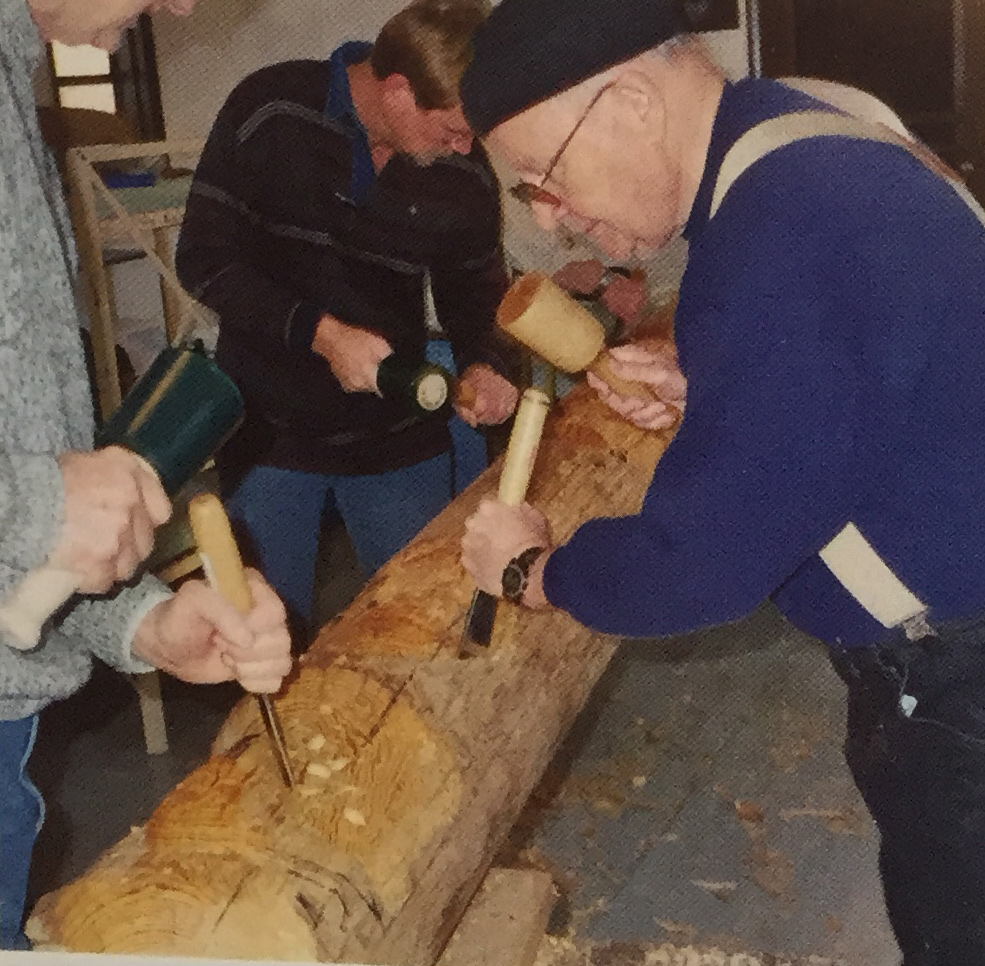
Keith carved his first few pieces after leaving the army in 1955, but it wasn't until 33 years later, when a friend introduced him to the Midwest Carvers Museum, that Keith found his carving mentor, Jim Leighton. Under Jim's tutelage, Keith discovered he had a gift for carving realistic and caricature faces. After only two years of instruction, Jim asked Keith to teach a carving class. A few years later, retirement found Keith teaching woodcarving not only at the Midwest Carvers Museum, but also at the Vogt Visual Arts Center, and then in 1998 at Palos Park’s “The Center,” where he has taught day and evening carving classes for the last eleven years.
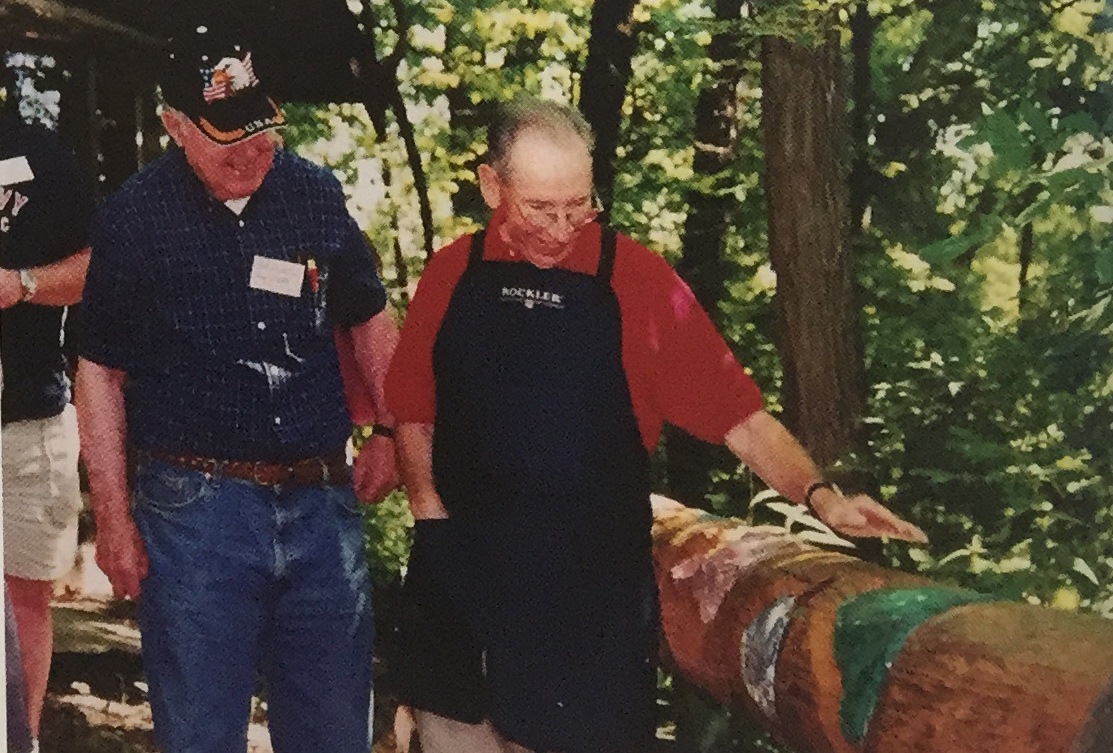
The Center, established in 1932 and set in acres of forest, has always been dependent on donations and good hearted volunteers. When The Center received a donation ' of tools, including saws, mallets, and mallet chisels, Keith , saw a teaching opportunity and began looking for "big wood" for a class project. A 14-foot telephone pole was the inspiration for Keifh’s carving classes’ first group carving effort—a totem pole for The Center.

Lois Hrejsa, an art instructor at The Center, collaborated with Keith and provided the drawing for the pole. Lois incorporated the animals seen in the surrounding forest: eagles, raccoons, deer, owls, ducks, foxes, squirrels, frogs, geese, and even a beaver gnawing the bottom of the pole. Lois does not take credit for what one child has nicknamed the winking "evil bunny." That mischievous bunny belongs to Keith Miller who, with a perfectly straight face, claims it followed him from the Midwest Carvers Museum.
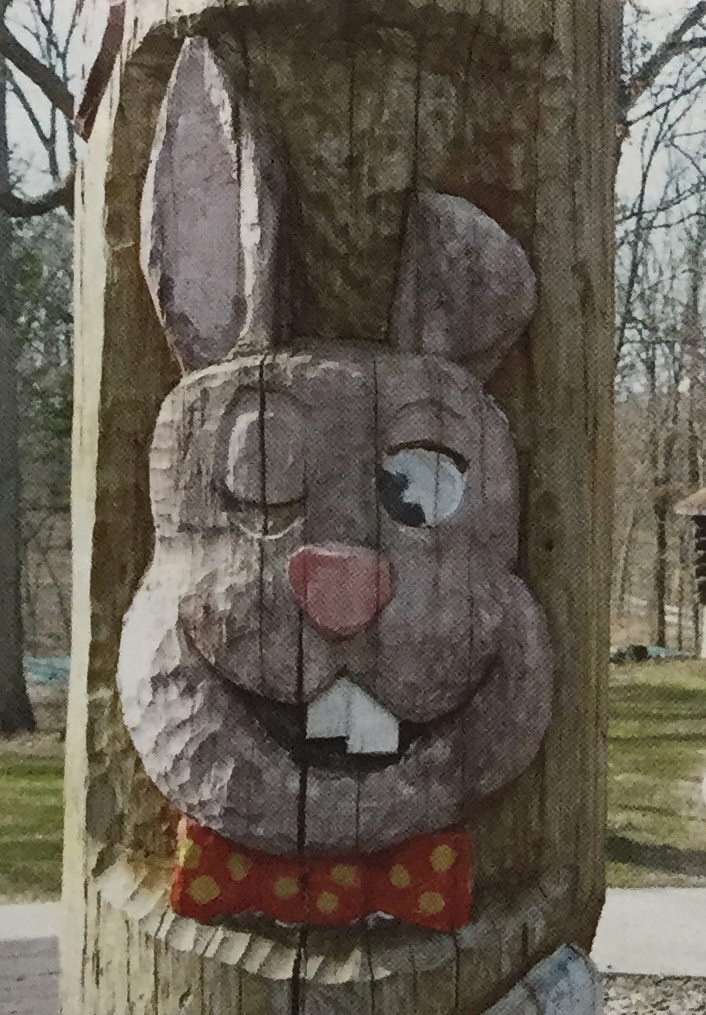
Keith copied Lois’s animal drawings onto the pole, adding the evil bunny in the pole’s center. It took the entire summer of 2002 for Keifh and his students to carve the totem pole. To withstand the elements, they sealed the pole with Thompson’s Water Seal before painting the brightly colored animals with Ronan's Lettering Enamel, one of the thoughest, strongest enamels used for sign painting.
Dan Snyder, a construction engineer, was responsible for installing the totem pole. After pouring a four-foot-deep foundation, the pole was lowered into the concrete and bolted to three protruding steel bars. The totem pole still stands strong today.
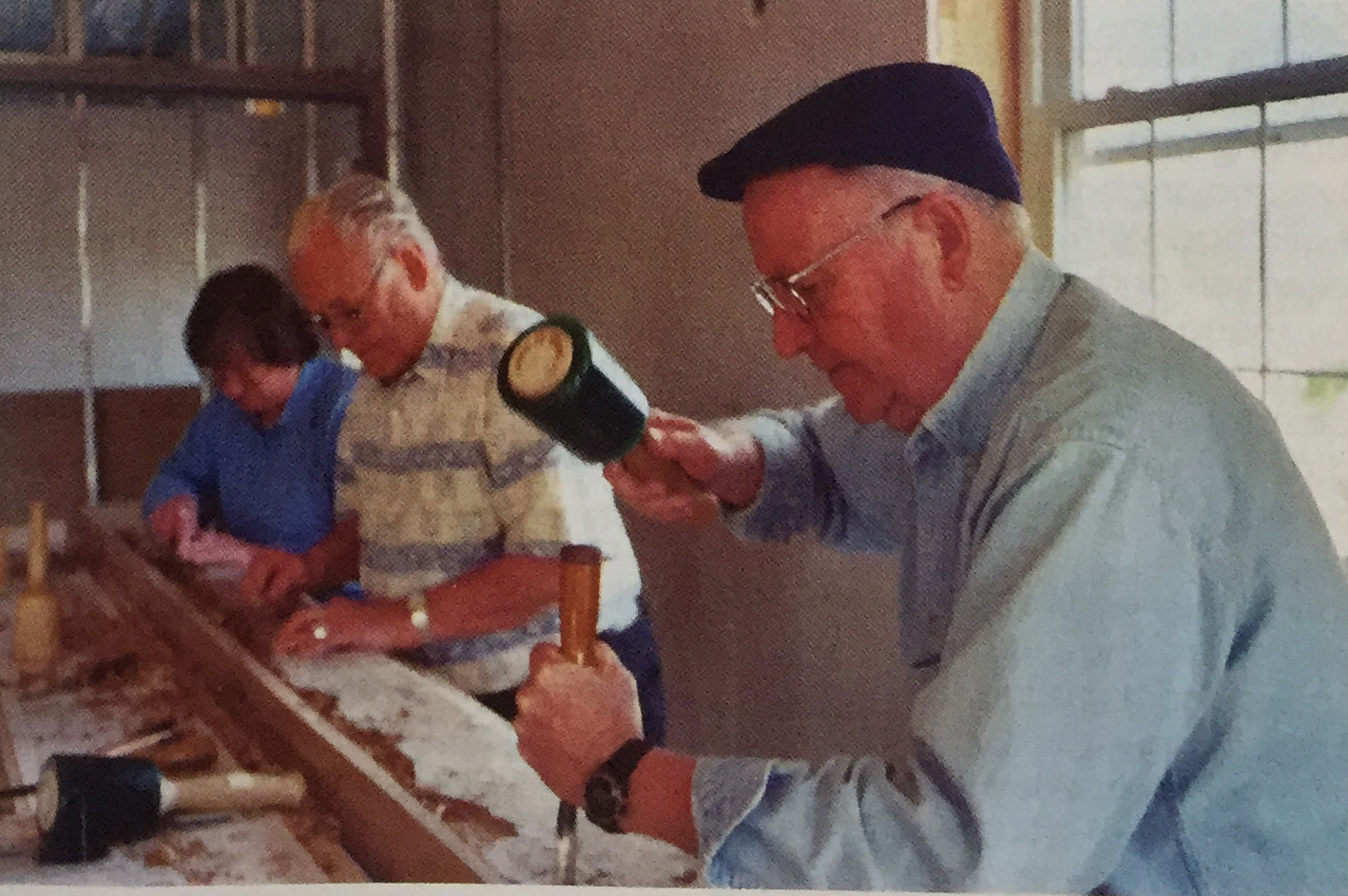
Two years later, The Center received funds to build a children's farm activity building. Lois Lauer, The Center's Program Director, asked Keith if he and his carving students would contribute a piece of art to the building. Keith decided it was the perfect opportunity to embark on a second class project using “big wood." He and his students would carve a mantel for the massive stone fireplace being built in the activity building’s great hall.
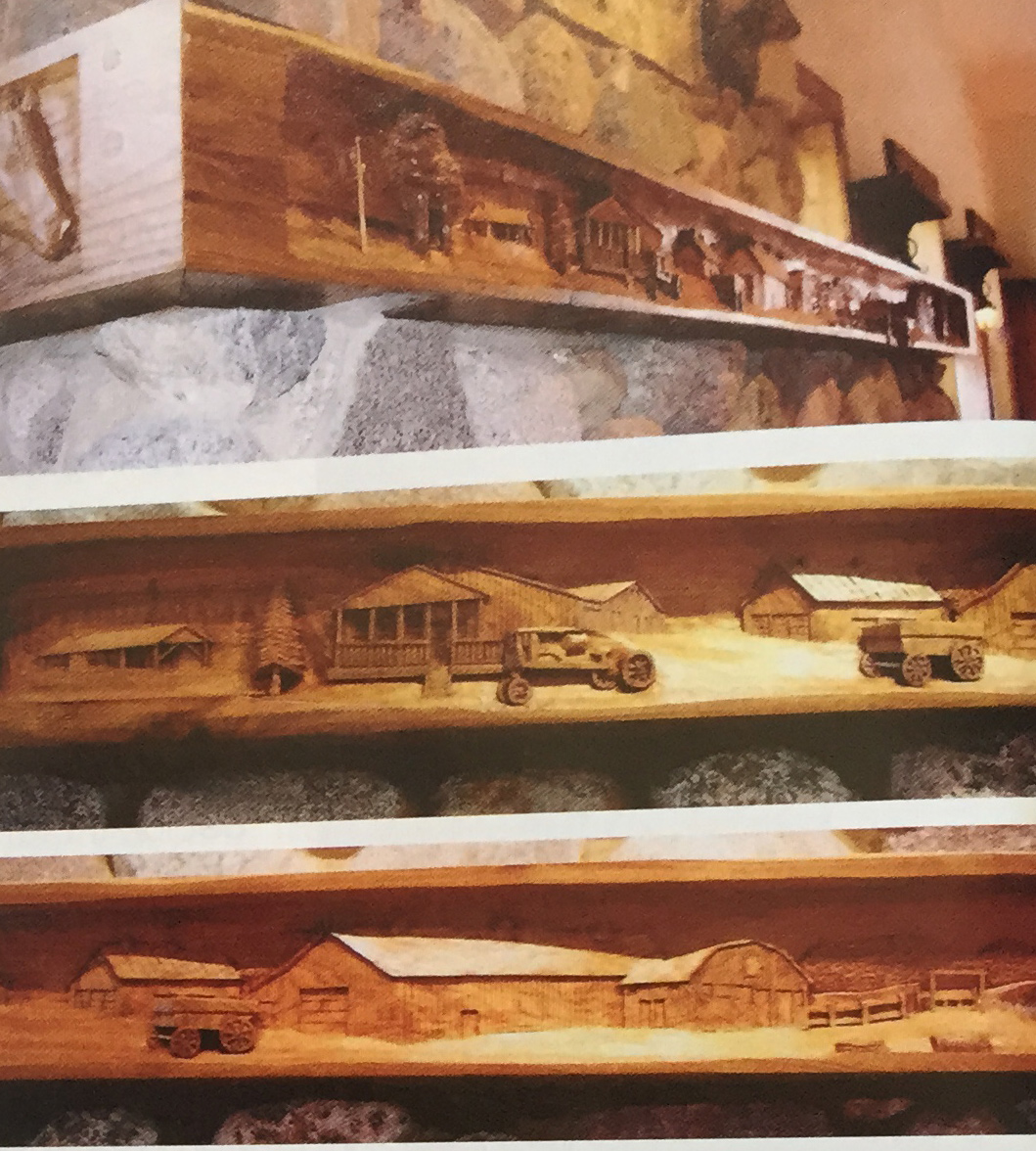
Keith purchased a 10' x 6" x 6” piece of butternut at the Midwest Carvers Museum for $150. The question was what subject matter should be carved on the mantel. A one-lane highway neatly divides The Center's 62 acres. The land on the east side of the highway was pastoral, with a pond, barn, lean-tos, tractors, pumpkin farm, and horses; while the west side was populated with the log buildings situated in the deep forest with rolling hills. It was decided that the mantel would depict everything on the east side of the highway. Lois (Hrejsa) and Keith, again, collaborated, and Lois produced a panoramic drawing, which included the soon-to-be-built children’s activity building. Keith transferred the drawing to the butternut, and his carvers were ready to carve.
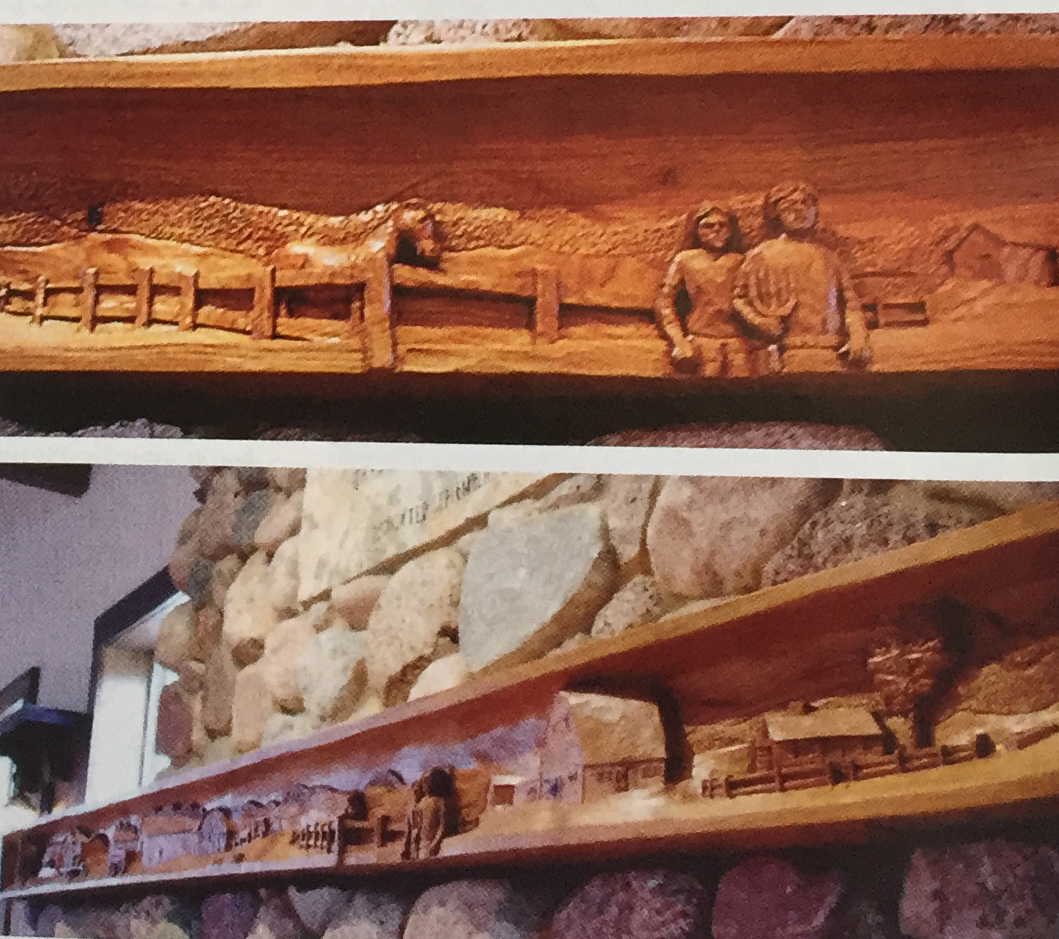
Mantel carving began March 22, 2004. Setting the mantel on sawhorses, the carvers enjoyed working outside in nice weather, but when it turned stormy, had the ability to tote the 50 lb. mantel inside the children's art center, where the children could watch the stone fireplace being built. Because Keith's carvers were at different carving levels, he faced the challenge of keeping the mantel's overall tone consistent. When questioned how he met this challenge, he advised, “I never allowed my students to work on the same portion of the carving. And because I was using the mantel as an educational project, I never hesitated to have them re-carve and refine sections until they either achieved near perfection or I decided it was ‘as good as it was going to get.'” A perfectionist, Keith admits to “fixing up” a few sections of the mantel—after hours.
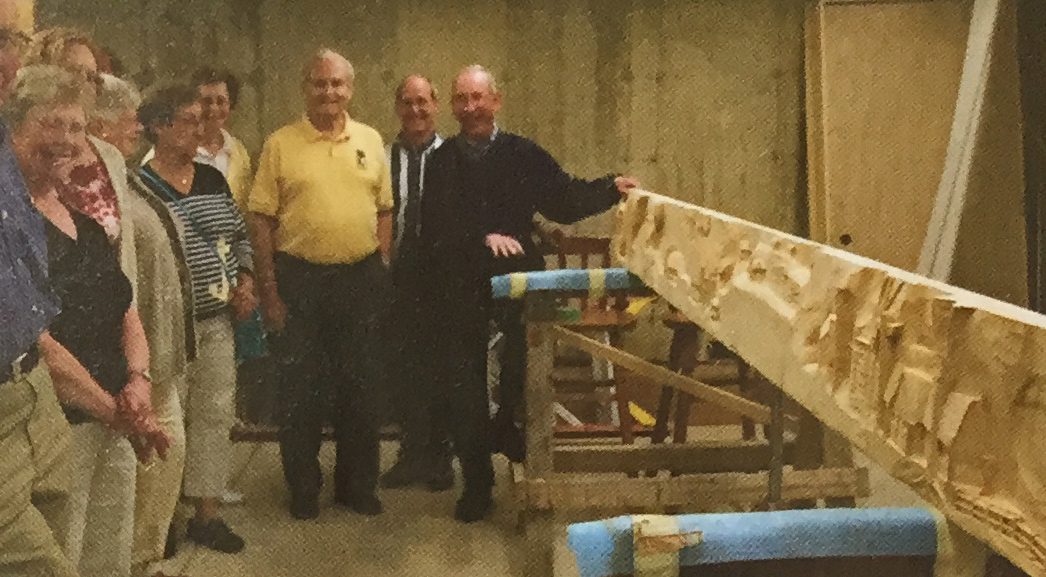
One hundred and ten hours into the carving, Keith was surprised when a tiny pinprick in the mantel, which he thought was the remnants of a twig, blossomed into a large piece of rotten wood. His solution—route out the rotten section, making a neat rectangle, then find and glue a matching piece of butternut into the mantel. The fix was so good, that it can’t be seen today. After the carving was completed, Keith called master carver Joe Dillett, of the “Ask Joe" fame, for his finishing recommendations. Joe suggested using three coats of /vl/nwax’s Helmsman Semi-gloss Polyurethane to enhance the butternut's warm tone. It worked beautifully. The mantel took 441 carving hours and was completed on September 13, 2004.
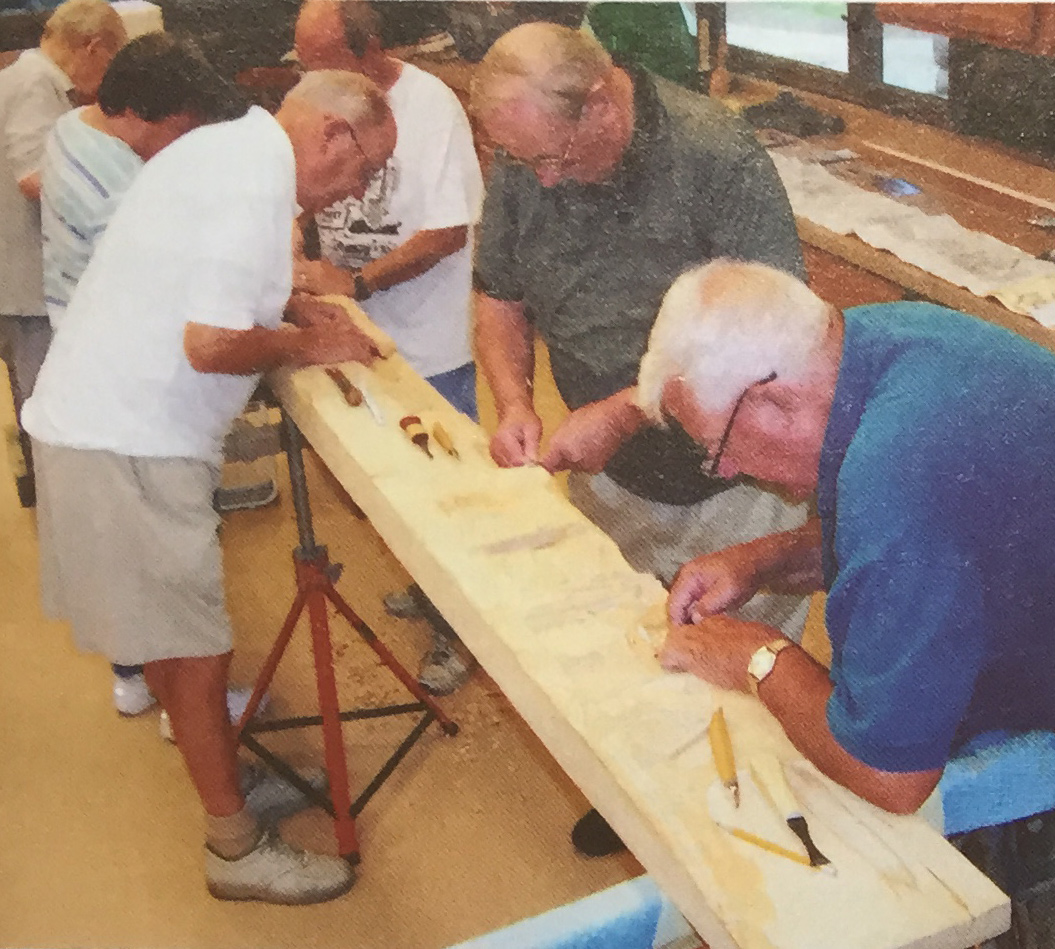
In 2005, Keith was personally commissioned to carve a 6' fireplace mantel depicting a panoramic view of an estate home and its property. Before starting the project, Keith again called Joe Dillett. Joe, known for his exquisife mantels, offered carving suggestions and advised that the Hardwood Connection in Sycamore, Illinois, would have the perfect wood for this project. Keith is quick to give Joe Dillett credit for his fine advice, which gives carvers confidence to tackle any large project.
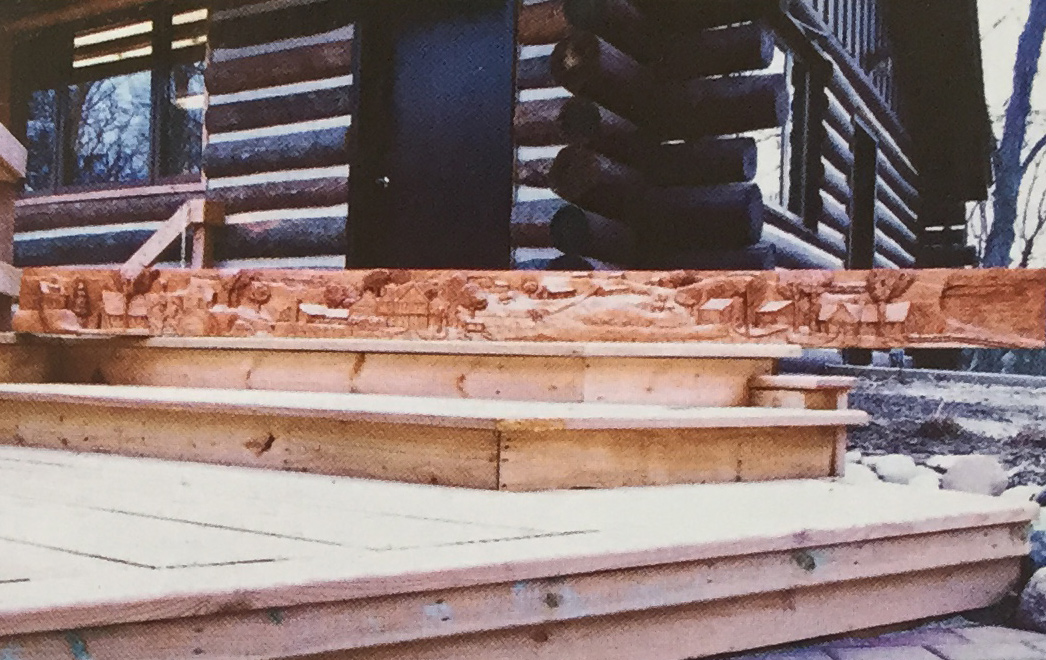
Three years later, in 2008, The Center’s Director again approached Keith. The Center had received contributions to build a two-story log building to house additional classes and workshops for adults and children. Would Keith and his carving students volunteer for a third "big wood" project? Keith and his students didn’t hesitate. They agreed to carve a second mantel to enhance the building. No fireplace? No problem! They’d hang it on the wall.
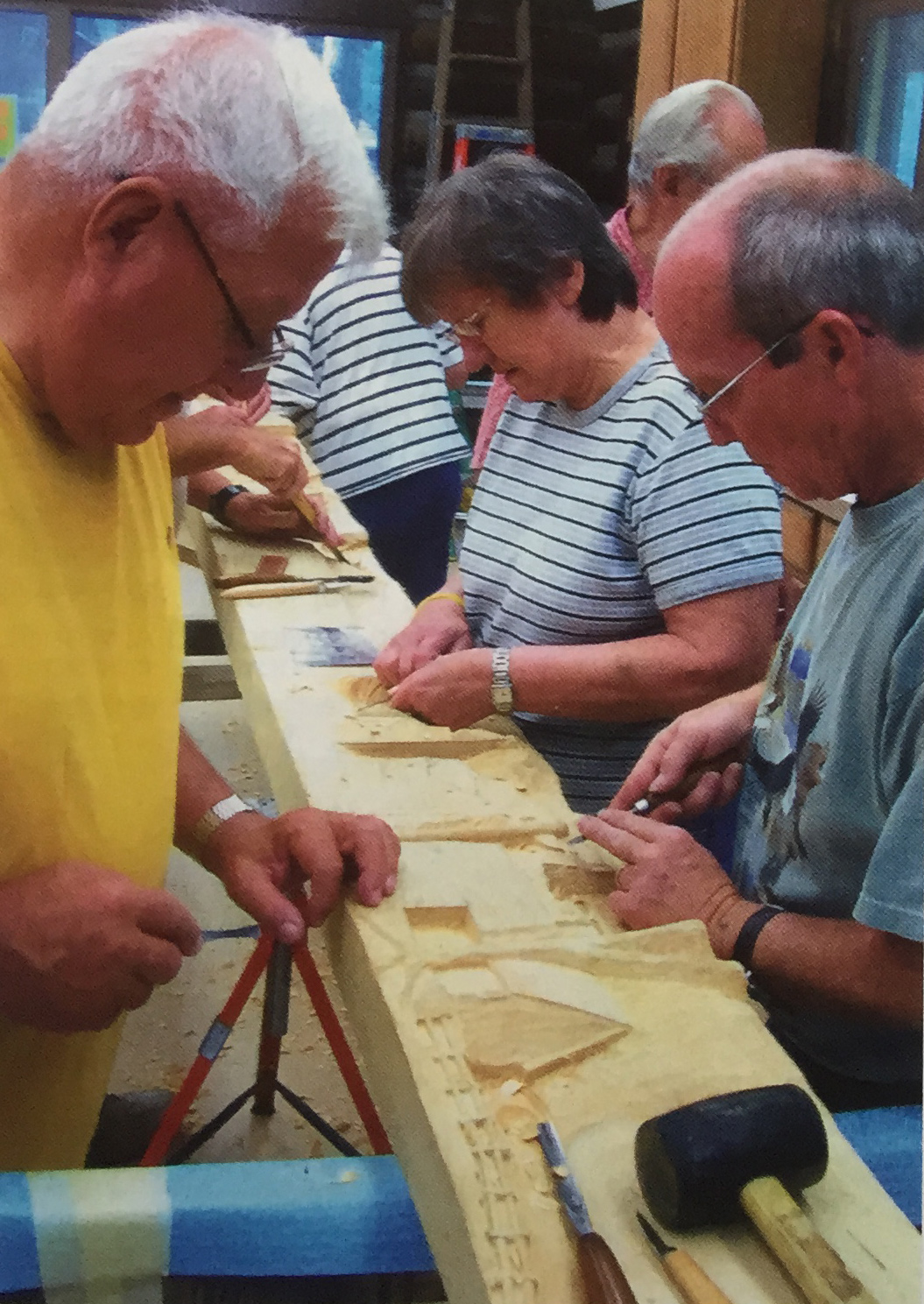
Again, Keith collaborated with artist Lois Hrejsa, who provided a panoramic drawing for the mantel—this time it was of The Center’s fourteen buildings set in the heavy forest and rolling hills, located on the west side of the highway. It included The Center's Lodge (built in 1932), log cabin art centers, herb cottage and, of course, the totem pole with its evil bunny.
For this second mantel, a 12' x 12” x 4” piece of basswood was purchased from Donald Horn Lumber in Chicago. The carving of this mantel presented Keith's carving class with two major challenges. The first was The Center's fourteen buildings. With each building facing a slightly different direction and each being situated in, on, or surrounded by rolling hills, keeping each building’s perspective was vital to the realistic nature of the mantel. Only by painstaking accuracy, under Keith's constant supervision, did the students remain true to Lois’s drawing and produce an artistic masterpiece.
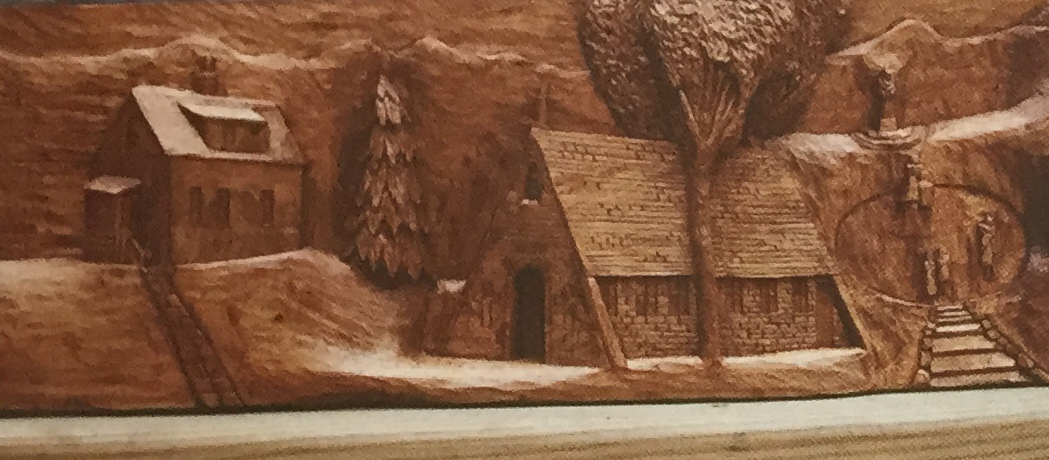
The groups of trees and shrubs surrounding each building presented the second challenge. To have a pleasing, natural background, Keith made certain that trees and bushes, adjacent to each other, were carved using different tools. While his students used traditional tools for the foliage—U-gouges and V-gouges, Keith also taught his students how to create punches.
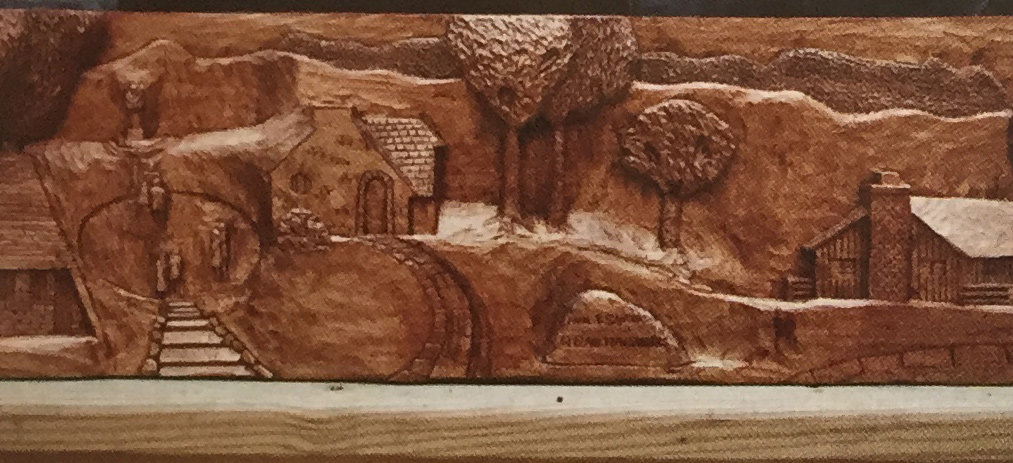
Using three nails, with the sharp ends cut off, he filed a symbol on each of the nail's ends: four dots on one nail, a cross on a second nail, and a simple star on a third. To create realistic foliage, only one type of punch was used per bush. Holding the nail (or punch) perpendicular to the wood, and hitting the nail’s head with a hammer, produced a design that, by itself, was uninspiring. But when the punch was moved and turned, and hit with varying degrees of pressure enough times to cover a specific area, one could almost feel the wind blowing through the leaves.
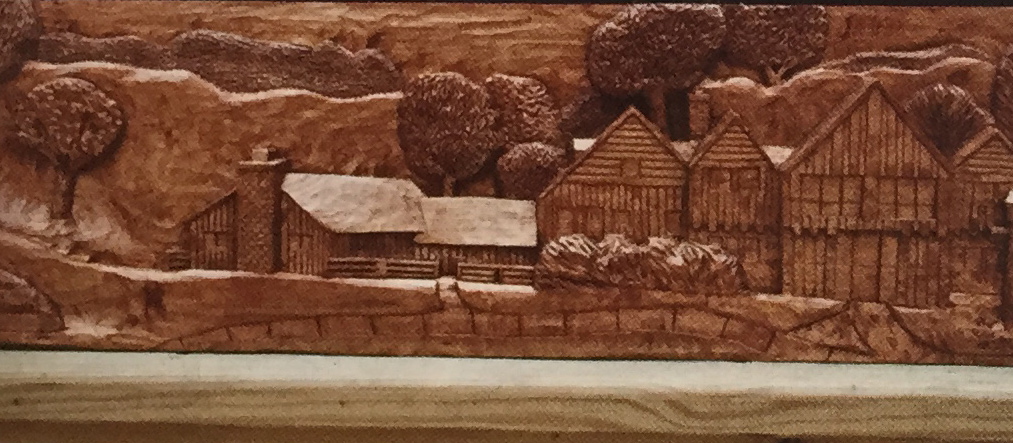
It took 571 student hours to complete the mantel, which was more than 130 hours longer than the first mantel. The additional carving time was blamed on extensive coffee breaks; not that the carvers were four years older.
The students stained the mantel with Benjamin Moore's Ipswich Pine, which was applied by brush and then lightly wiped off. After drying for a few days, it received the same Helmsman finish that Joe Dillett had recommended for the first mantel.
Now, Keith doesn't find much time to carve recreationally; he’s either on the golf course, teaching woodcarving classes, or putting on carving demonstrations.
Keith is a traditional carver and, while he respects different carving techniques and perspectives, does not allow sanding or power tools in his classes. Keith's recommendations for beginners are simple—use good-quality tools, learn to sharpen them correctly, plan your carvings, and learn by your mistakes. He discourages beginners from purchasing a set of carving tools, but suggests they start with a good bench knife, a 3/4" fishtail gouge for hogging, and a V-gouge with the wings angled back. If at all possible, Keith, who is an accomplished watercolorist, suggests carving students take a drawing class. Learning how to draw helps carvers see their subjects in different ways, which is invaluable to their carving.
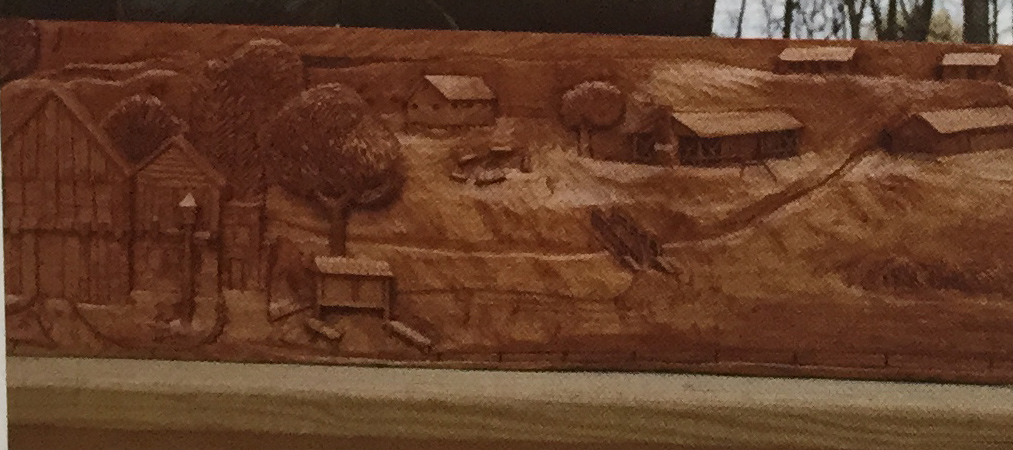
From September through May, Keith Miller teaches a morning and an evening carving class at The Center. His classes range from 10 to 20 students. Keith is patient with beginning carvers, but his class size continues to grow because intermediate and advanced students receive personalized instruction on the projects of their choice. During one class, projects have included a bulldog bottle stopper, a 3" character carving, a relief carving of a man fishing next to a covered bridge, a wizard carved from a three-foot log, and a life-sized pelican. Along with instruction, these classes have become a social event with coffee, pastries, and kibitzing.
Keith is a master carver and a formidable educator who expects the best from his students, each of whom have heard him say, “It’s done when I say it's done.”
Keith teaches his classes “in the square” on a rolling stool. His students sit at the four fables that make up the square, with Keith in the middle rolling from one student to another. This way, no one can escape Keith’s detection. From the other side of the square, he’ll call out over his shoulder, “Hey—I thought I told you to keep your fingers; behind your knife!" Should a student be unfortunate enough to cut himself, after Keith’s liberal application of alcohol and a tightly applied Band-Aid, Keith applies an additional “safety" reminder.
The student is required, fa the rest of fhe session, to wear a 3" plastic blood drop, hanging from a string, around his or her neck. Grown men (some ex-marines) have dashed to the restroom where rumor has it they would rather bleed to death than admit to a nicked thumb. “I never thought I'd get such satisfaction from teaching," Keith Miller says with a wink and a smile that is more than slightly reminiscent of an evil bunny.
The Miller Carvers: Keith Miller (Instructor), Audry Altringer, John Brady, Randy Glau, Jim Guenther, Tom Holmes, Jack Landgraf, Andy Maricle, Paul Merritt, Bob Peck, Gary Robinson, April Schabes, Dan Snyder, and Al Wendt.
About the Author

Susan Alexander lives in Orland Park, Illinois, with her husband, Robert. Susan began carving three years ago. Last year, when her husband presented her with a bandsaw for their wedding anniversary and she claimed it was the best gift of their 37 years, he promptly topped it by having a studio built for her.
Susan is a member of Mensa, a member of the NWU (National Writers Union), has had 3 novels and numerous newspaper and magazine articles published, holds a full-time job, a black belt in judo, has caught and released 14 muskies (she pulled one into the boat by hand), and is a freelance writer. In every minute of her free time, she carves.
Read our latest articles at Carving Magazine homepage.


